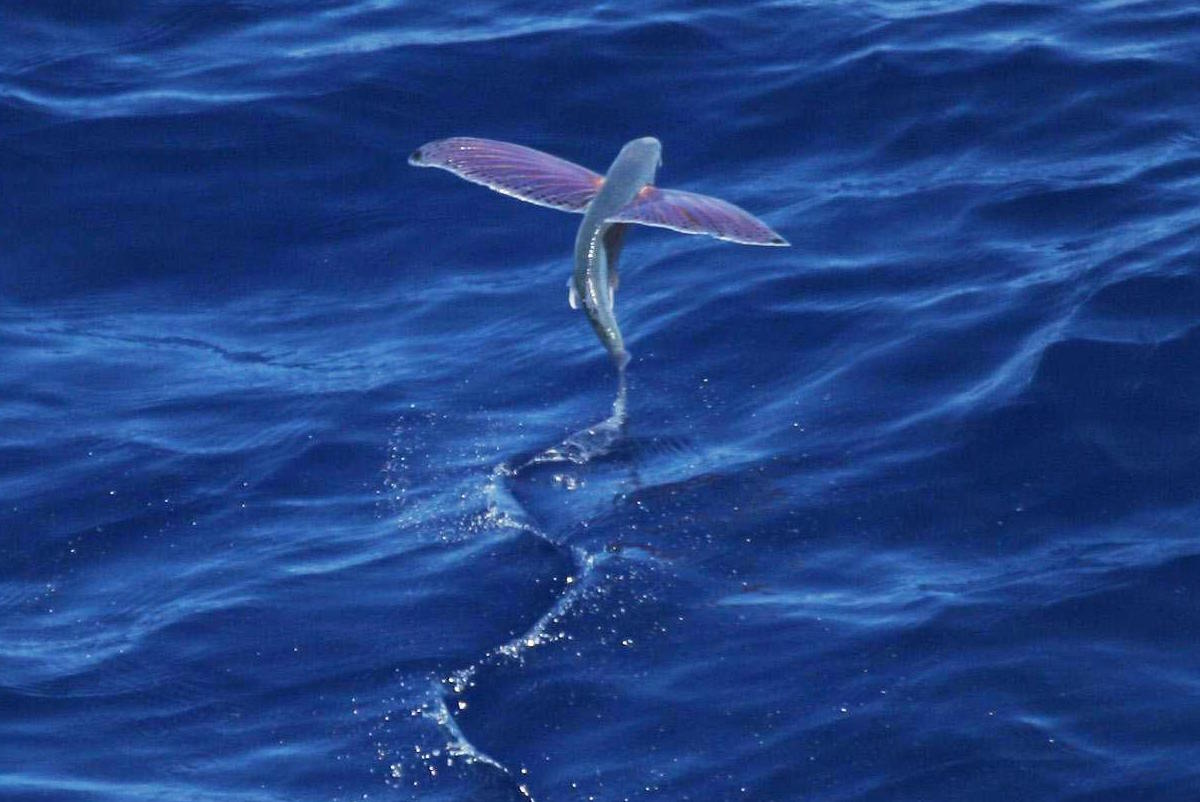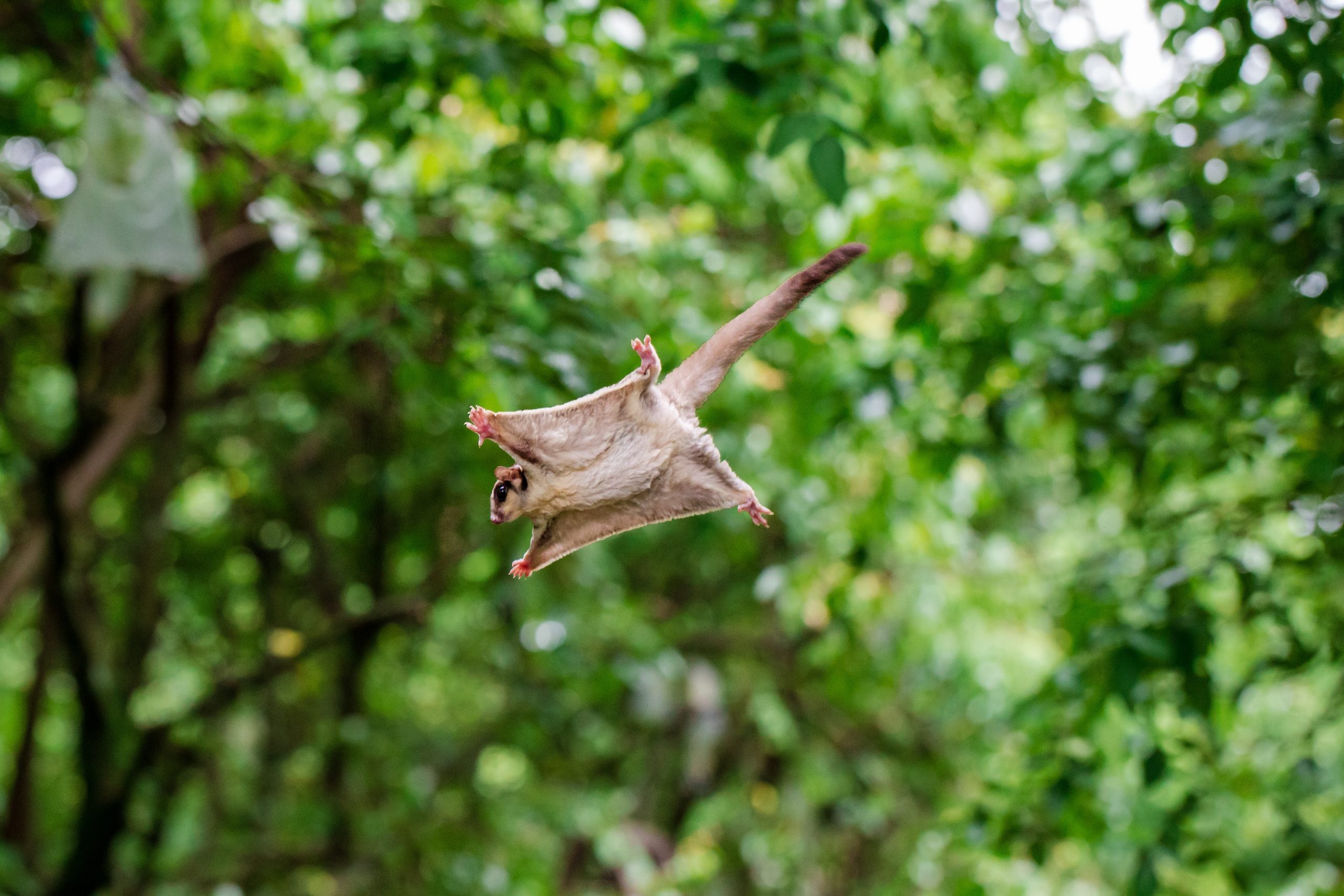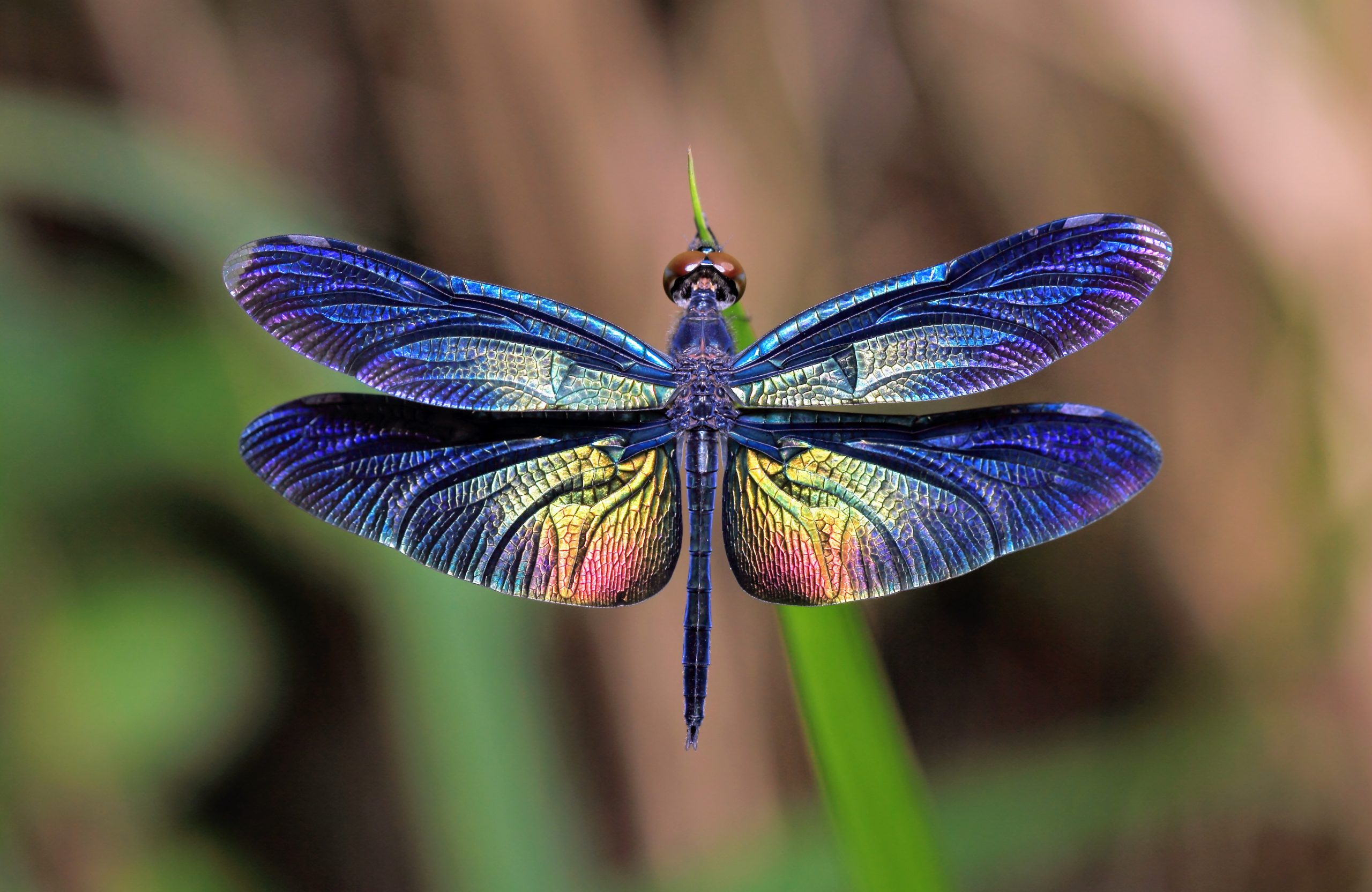When we think of animals with wings, birds are often the first creatures that come to mind. However, many other animals also have wings, including insects, mammals, and fish. Not all wings are created equal, and not all animals with wings can fly.
For example, some birds like ostriches and emus have rudimentary wings but only walk, while heavy land-dwelling birds like emus and cassowaries lack the keel that anchors the pectoral muscles to the breastbone, making their wings essentially useless for flight.
You are reading: Not Just Birds, Here Are Types Of Animals With Wings
In this article, we will explore eight types of animals with wings, not just birds, and learn about the unique features of their wings.

Not Just Birds, Here Are Types Of Animals With Wings
Bats
Bats are fascinating creatures that are the only mammals capable of true flight. They belong to the order Chiroptera, which means “hand-wing” in Greek, and their wings are their most distinctive feature.
Bat wings are very different from bird wings, as they have a much more flexible structure that is similar to a human arm and hand. The wings have a thin membrane of skin called the patagium that extends between the “hand” and the body, and between each finger bone.
Bats can move their wings like a hand, essentially “swimming” through the air, and they use their “thumb” to climb up trees and other structures. The individual bats with mutations that led to wider skin membranes over time eventually led to fully functional wings. Bat wings are not only used for flying, but also for climbing, food handling, and fighting.
Bats have four long fingers and a thumb, each connected to the next by a thin layer of skin, and their flexible wing structure allows them to change direction very quickly. Bat wings are highly specialized for flight, and their morphology varies depending on their ecology.
Insects

Insects are a diverse group of animals that make up the largest class of living organisms on Earth. Many insects have wings, which enable them to fly and hover in the air.
Insect wings are adult outgrowths of the insect exoskeleton that are found on the second and third thoracic segments, and the two pairs are often different in size and shape. The wings of insects are highly specialized and vary depending on the species and their ecology.
Some insects, such as mayflies and dragonflies, have the flight muscles attached directly to their wings, while all other living winged insects fly using indirect flight muscles that cause the thorax to vibrate.
Most insects control their wings by adjusting the tilt, stiffness, and flapping frequency of the wings with tiny muscles in the thorax. Insects with wings include bees, wasps, hornets, roaches, flies, butterflies, moths, beetles, dragonflies, damselflies, grasshoppers, and crickets, among others.
Each order and insect family has distinctive wing shapes and features, making insect wings fundamental in identifying and classifying species.
Pterosaurs
Pterosaurs were a group of flying reptiles that lived during the Mesozoic era, from the Late Triassic to the end of the Cretaceous period, approximately 228 to 66 million years ago. They were the earliest vertebrates known to have evolved powered flight, and their wings were formed by a membrane of skin, muscle, and other tissues stretching from the ankles to a dramatically lengthened fourth finger.
Pterosaurs had two major types: basal pterosaurs, which were smaller animals with fully toothed jaws and typically long tails, and pterodactyloid pterosaurs, which were larger and had toothless jaws and shorter tails.
Read more : Discover 5 Animals That Lurk Atop Texas’s Tallest Mountain
Pterosaurs had hollow bones, large brains with well-developed optic lobes, and several crests on their bones to which flight muscles attached. They had a diverse range of head types, and their ability to fly allowed them to evolve into many niches, taking advantage of many different food sources.
Pterosaurs were not dinosaurs, but they were close cousins of dinosaurs who evolved on a separate branch of the reptile family tree. The precise relationships between pterosaurs are still unsettled, and many studies of pterosaur relationships are ongoing.
Flying fish
Flying fish are a family of marine ray-finned fish in the order Beloniformes, known colloquially as flying fish or flying cod. They are found in tropical and temperate marine waters worldwide, and there are about 64 species grouped in seven genera.
While they cannot fly in the same way a bird does, flying fish can make powerful, self-propelled leaps out of the water where their long wing-like fins enable gliding for considerable distances above the water’s surface.
Flying fish have a streamlined torpedo shape that helps them gather enough underwater speed to break the surface, and their large, wing-like pectoral fins get them airborne. Having a rigid body during glided flight gives the flying fish aerodynamic advantages, increasing its speed and improving its aim.
Furthermore, flying fish have developed vertebral columns and ossified caudal complexes, which provide the majority of strength to the flying fish, allowing them to physically lift their bodies out of water and glide remarkable distances.
Flying fish are not only fascinating creatures but also commercially fished in Japan, Vietnam, China, Indonesia, and India by gillnetting and dipnetting.
In Japanese cuisine, the fish is preserved by drying to be used as fish stock for dashi broth, and the roe of Cheilopogon agoo, or Japanese flying fish, is used to make some types of sushi, known as tobiko.
Sugar gliders
Sugar gliders are small, nocturnal, arboreal, and omnivorous gliding possums that are native to Australia, Indonesia, and Papua New Guinea. They are named after their predilection for sugary foods such as sap and nectar and their ability to glide through the air, much like a flying squirrel.
Sugar gliders have a squirrel-like body with a long, partially prehensile tail, and they are sexually dimorphic, with males typically larger than females. They have a unique membrane of skin called a patagium that stretches between their front and hind legs, allowing them to glide through the air.
Sugar gliders are highly social animals that live in family groups or colonies consisting of up to seven adults, plus the current season’s young. They are also popular exotic pets, but they require frequent handling, ample space for exercise, and a very particular diet.
Sugar gliders are playful, curious, and social pets that bond closely with their human families if given the care, enrichment, and socialization they need.
Flying squirrels

Flying squirrels are a tribe of 50 species of squirrels in the family Sciuridae. Despite their name, they are not capable of full flight in the same way as birds or bats, but they are able to glide from one tree to another with the aid of a patagium, a furred wingsuit-like skin membrane that stretches from wrist to ankle. Their long tails also provide stability as they glide.
Flying squirrels are long-limbed and slender, and they have large eyes and a long, bushy tail that may be cylindrical or flattened. Their dense fur is soft and long and either silky or woolly in texture.
Flying squirrels are nocturnal and den in tree cavities, grottoes, rock crevices, or cave ledges, and some also build globular nests high in trees where branches join the trunk. They are found in the temperate and tropical forests of India, Asia, North America, and Europe.
Some species of flying squirrels are the northern flying squirrel, southern flying squirrel, and giant flying squirrel. Flying squirrels are not only fascinating creatures but also important members of their ecosystems, as they help disperse seeds and serve as prey for predators such as owls and snakes.
Dragonflies

Dragonflies are fascinating insects that belong to the infraorder Anisoptera in the order Odonata. They are found on every continent except Antarctica and are instantly recognizable by their large bodies, four long, horizontal wings, and the way they hover and zip around.
There are about 3,000 extant species of true dragonflies, and they are most commonly found near freshwater throughout most of the world. Dragonflies have two narrow pairs of intricately veined, membranous wings that, while generally transparent, may have colored markings.
Unlike damselflies, the front and rear wing pairs are shaped differently, and dragonflies rest with their wings spread horizontally, rather than held vertically against each other.
Dragonflies also have huge bulging eyes that occupy most of the head, giving some a field of vision approaching 360 degrees. Young dragonflies, called larvae or sometimes nymphs or naiads, are aquatic and are as dedicated predators underwater as the adults are in the air.
They have bulging eyes somewhat similar to the adults, but possess a formidable anatomical structure not present in the adult, called the “mask,” which is a fusion of the larva’s third pair of mouthparts.
Dragonflies are important to their environments both as predators, particularly of mosquitoes, and as prey to birds and fish. Dragonflies are also represented in human culture on artifacts such as pottery, rock paintings, statues, and Art Nouveau jewelry, and they are used in traditional medicine in Japan and China, and caught for food in Indonesia.
Theropod dinosaurs
Recent studies have shown that some theropod dinosaurs, the group of two-legged dinosaurs that includes the famous Tyrannosaurus rex, were capable of flapping their wings before they could fly.
The potential for powered flight evolved at least three times in theropods: once in birds and twice in dromaeosaurids. The origin of avian flight is still a controversial topic in paleontology, but it is believed that the motion of flapping feathered wings was developed passively and naturally as the dinosaur ran on the ground.
The forced vibrations excited by hindlimb locomotion stimulated the movement of wings, creating a flapping-like motion in response. Although this flapping motion could not lift the dinosaur into the air at that time, the motion of flapping wings may have developed earlier than gliding.
The new species, named Ambopteryx longibrachium, belongs to the Scansoriopterygidae, one of the most bizarre groups of non-avian theropods. The preserved soft anatomy confirms shoulder-powered upstroke of early theropod flyers, reveals enhanced early pygostylian upstroke, and explains early sternum loss.
However, it is important to note that while some theropod dinosaurs had wings, not all of them could fly, and the evolution of flight in birds was a complex process that took millions of years.
FAQS
1. What are some animals with wings besides birds?
Some animals with wings besides birds are bats, insects, pterosaurs, flying fish, sugar gliders, flying squirrels, dragonflies, and some theropod dinosaurs.
2. Can all animals with wings fly?
No, not all animals with wings can fly. For example, emus and cassowaries are heavy land-dwelling birds that lack the keel that anchors the pectoral muscles to the breastbone, making their wings essentially useless for flight.
3. How are bat wings different from bird wings?
Bat wings are very unique and are different from bird wings. Their wings are more closely related to human arms than any other creature. Bat wings are formed of a flight membrane stretched over slender, elongated arm and hand bones.
4. What is a patagium?
A patagium is a membrane of skin that stretches between an animal’s front and hind legs, allowing it to glide through the air. Animals with patagia include sugar gliders, flying squirrels, and some species of bats.
5. What are some adaptations that allow animals to fly?
Some adaptations that allow animals to fly include wings with feathers or skin membranes, lightweight and strong bones, and powerful flight muscles. The shape and size of wings also vary depending on the animal’s ecology and flight style.
Source: https://petstutorial.com
Category: Animals










